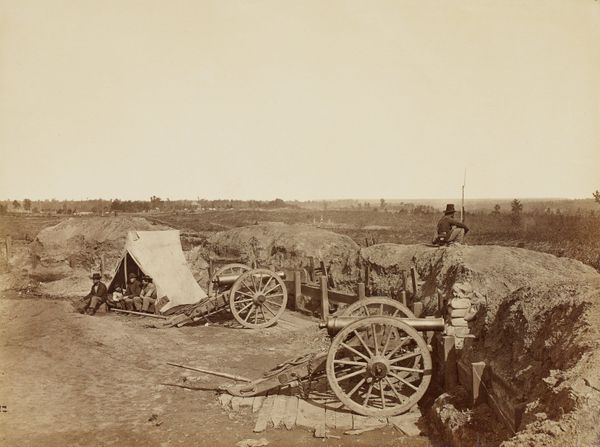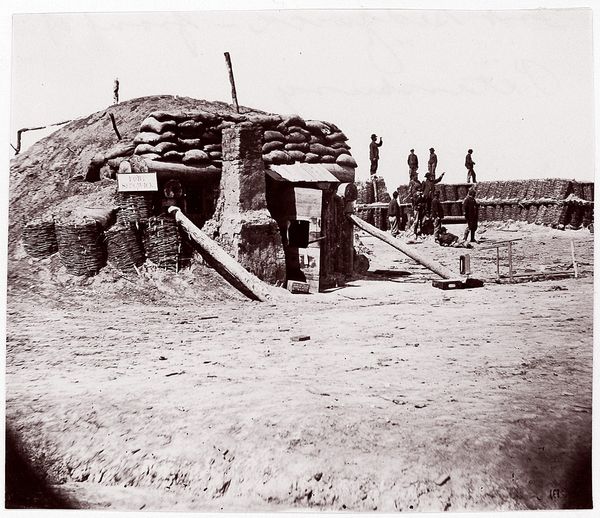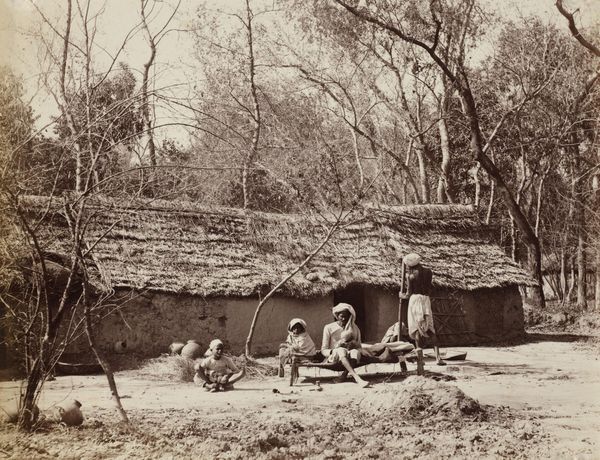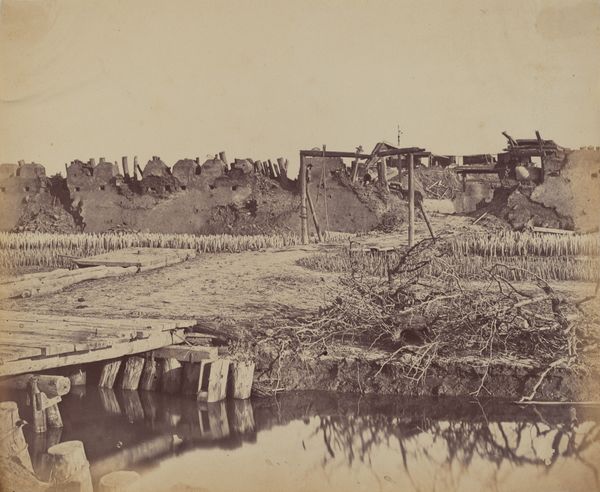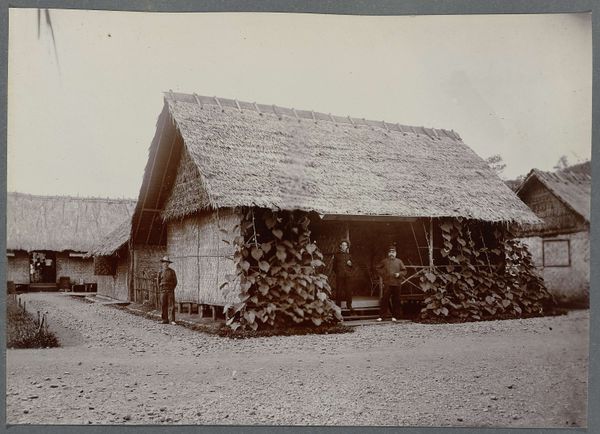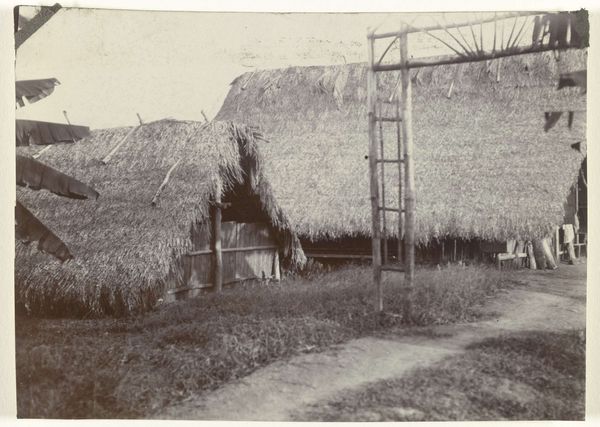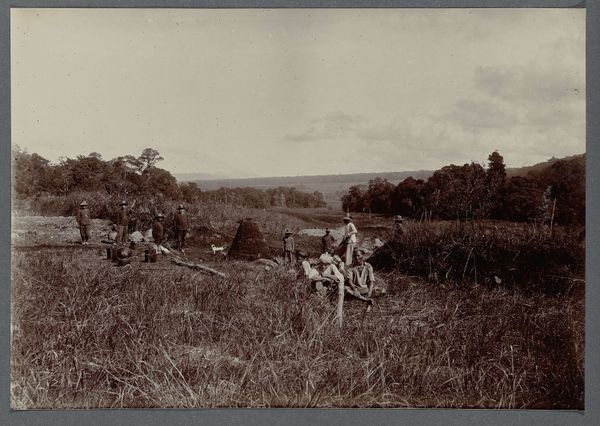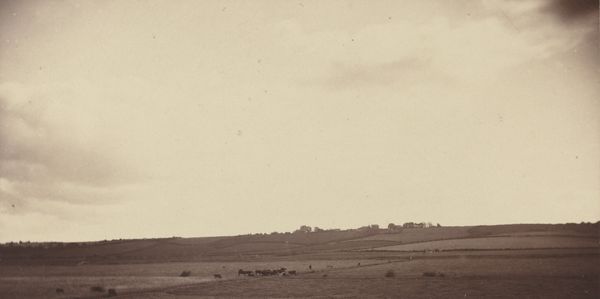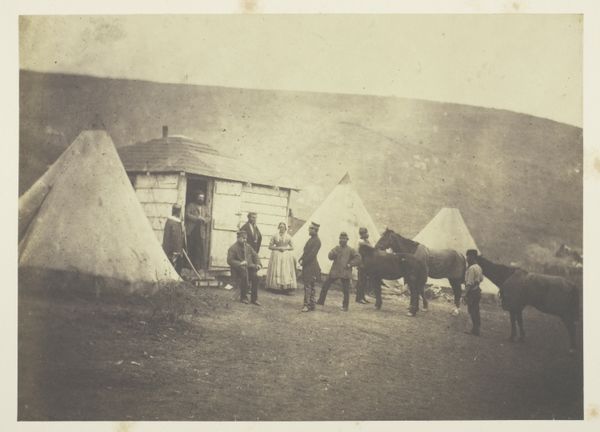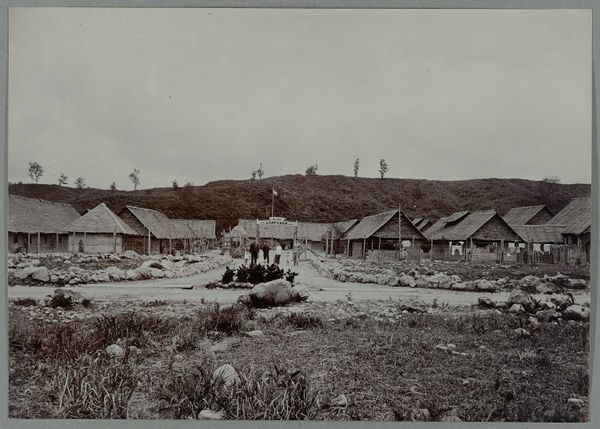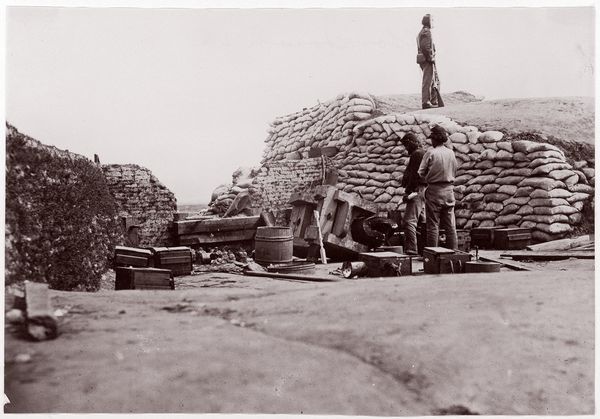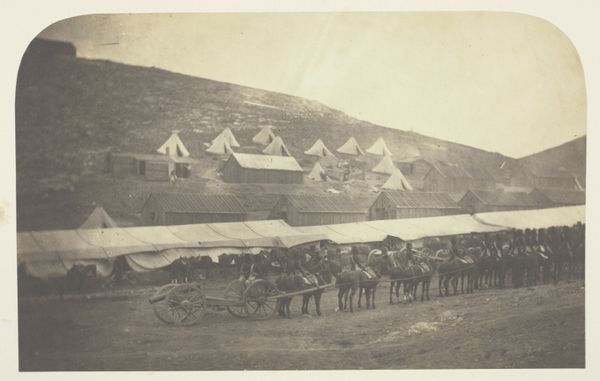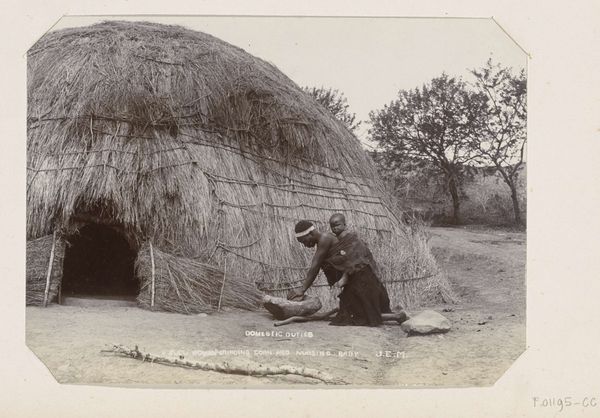
photography, albumen-print
#
16_19th-century
#
landscape
#
outdoor photograph
#
photography
#
19th century
#
genre-painting
#
albumen-print
Dimensions: image: 15.3 × 21.1 cm (6 × 8 5/16 in.) sheet: 15.5 × 21.2 cm (6 1/8 × 8 3/8 in.)
Copyright: National Gallery of Art: CC0 1.0
Editor: Here we have Robert Tucker Pain's "Building a Haystack," dating back to around 1865. It's an albumen print, so it has that warm, sepia tone that's so characteristic of photography from that era. The people on top of the stack are fascinating. What do you see in this photograph, viewed purely as a work of art? Curator: Primarily, I notice the striking juxtaposition of textures. The rough, organic haystack contrasts sharply with the smoother lines of the figures atop and those women and a horse cart beside the haystack. Observe how the artist used the horizontal format and composition to create a balanced but certainly not symmetrical image, layering textures to define both foreground and background with variations of the sepia tones. This juxtaposition invites closer viewing and meditation on its parts. Editor: That makes a lot of sense! It’s easy to miss the composition because the scene looks so… everyday. Is there anything else that stands out to you as unique or particularly skillful? Curator: Consider the placement of the figures along the top of the hay, creating a secondary implied horizon. These lines both unite and separate distinct picture planes, thereby layering of depths which create an ambiguity within the otherwise mundane rural scene, almost pulling one into the image. The sepia tone helps with flattening out and confusing what are obvious lines. Editor: That's a great point. Thinking about the tonal qualities and shapes this way gives me an entirely new perspective. Thank you! Curator: Indeed. Examining art this way allows for new insights based solely on the art’s physical and aesthetic qualities.
Comments
No comments
Be the first to comment and join the conversation on the ultimate creative platform.
